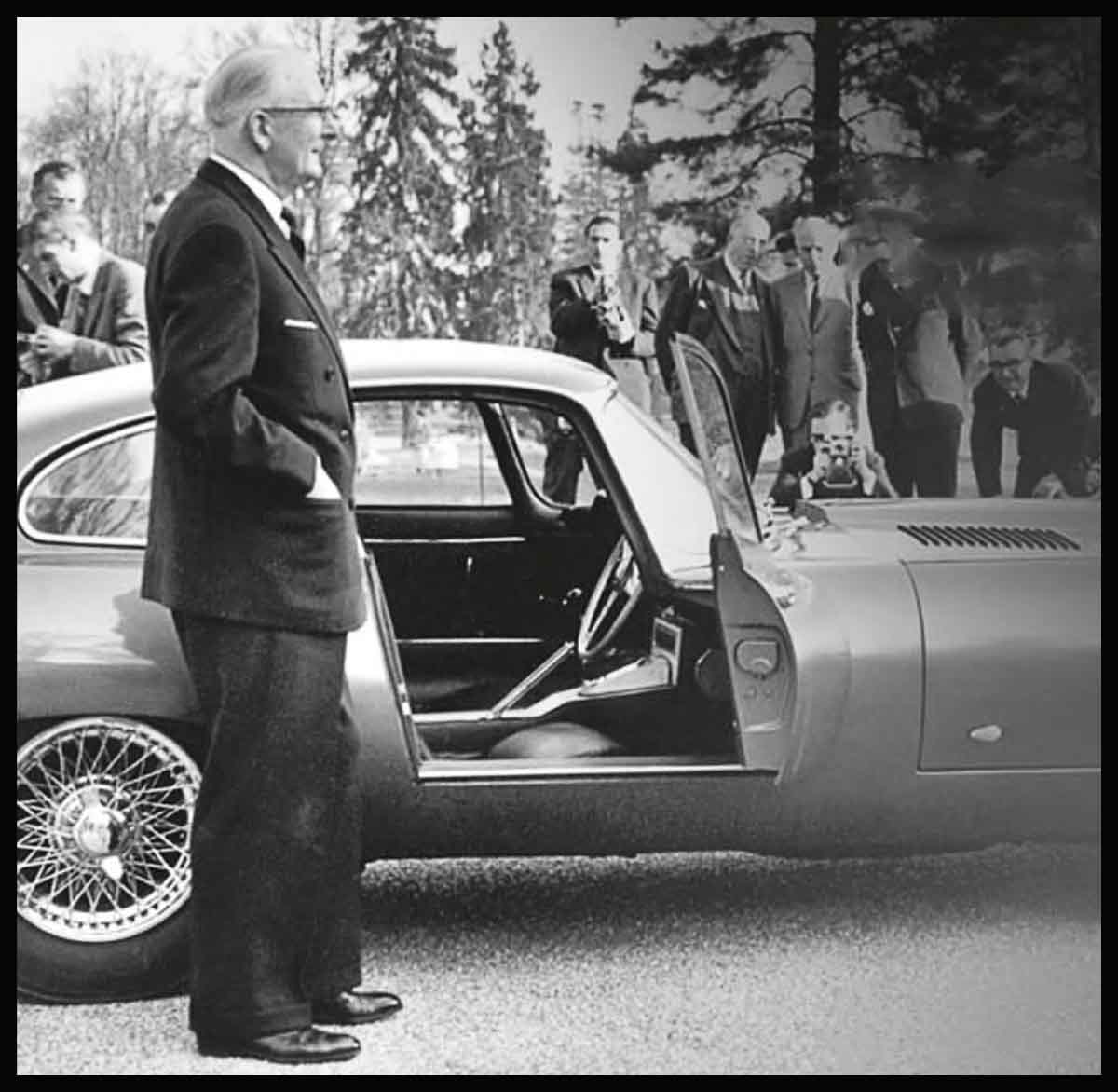
Great Marques—The Jaguar Story
In 1922 motorcycle enthusiasts, William Lyons and William Walmsley, went into partnership to build sidecars. Five years later, Lyons designed a stylish body for the Austin Seven, and just one year on from then his firm moved to Coventry; from these humble origins the Jaguar marque leapt into life.
“I want that car and I want it now.”
SINGER FRANK SINATRA, ON SEEING THE JAGUAR E-TYPE FOR THE FIRST TIME AT THE NEW YORK AUTO SHOW, APRIL 1961
THE SWALLOW SIDECAR COMPANY, run by William Lyons and William Walmsley, quickly evolved its business by offering attractive coachwork on a variety of chassis. Lyons, however, was determined to make his own cars, and in 1932 he launched the SSI, which used a modified Standard chassis that supported Swallow’s rakish coupe coachwork, complete with long bonnet and fake hood irons. The SSI was an immediate hit, and in 1934, when Walmsley sold out to Lyons, the company renamed itself SS Cars.

In 1935 Lyons launched his first sports car, and at the end of the year he brought out a brand-new range of Jaguar cars, including three saloons and the 100-mph (161-km/h) SSI00 two-seater roadster. Buyers loved Lyons’ mix of stunning lines and excellent value, and SS Cars was on a roll. After World War II, the name SS Cars, with its Nazi connotations, was unacceptable, and in 1945 the company changed its name to Jaguar Cars Ltd. In quiet moments during the war. Jaguar engineers had laid plans for a superb 3.4-liter, six-cylinder twin-camshaft engine, which was intended to power a new sports saloon. The engine was called the XK, and Lyons decided to build a sports car that could act as a showcase for the power unit, for the power unit, for display at the 1948 London Motor Show. This car, named the XK120, caused a huge stir with its 120-mph (193-km/h) performance, sub-$1,500 (£1,000) price tag, and sensational good looks. Lyons quickly turned the machine into a full production model, and it was joined in Jaguar’s lineup by the handsome Mk VII saloon in 1950. Both cars were highly successful in motor sport. The Mk VII was an unlikely rally car, but now Jaguar set its sights on sports car racing domination with its XK120C (for Competition), or C-type.

The sensational sports car, with its excellent straight-six engine, won itself and Jaguar instant acclaim.
This car, which pioneered disc brakes, won the Le Mans 24-hour race in 1951, driven by Peter Walker and Peter Whitehead. Tony Rolt, Duncan Hamilton, and a C-type repeated the feat in 1953. Jaguar Cars Ltd’s scientifically designed D-type saw Le Mans victories in 1955, 1956, and 1957—an extraordinary achievement for the small British company. Jaguar also created the first compact sports saloon in 1955—this 2.4 liter ushering in monocoque construction for Jaguar cars.

This is the epitome of the compact sports saloon among British classic cars, with six-cylinder engines from 2.4- to 3.8-liter.
The year 1957 saw a 3.4-liter edition that was very fast, but the cars were transformed in 1959 when they matured to the Mk II model. becoming one of the most universally coveted Jaguars of all time.
Feeling there was nothing more to prove in racing, Lyons shut the factory competition department, and set his team the task of turning the D-type into a sports car. The result arrived in 1961 as the E-type—another Jaguar that made an enormous impact. Its clever, aircraft-inspired concept and aerodynamics were impressive, but it was the sleek, arrow-like profile and ability to reach 150 mph (241 km/h) that caused an instant queue of impatient buyers.

The XJ6 replaced no less than four Jaguar sedans in one go, vastly upping the game for ride, handling, and performance.
Jaguar Cars Ltd, which had itself already acquired Daimler in 1960, merged with the British Motor Corporation in 1966. This in turn led to it joining British Leyland. However, the company clung bravely on to its independence, and in 1984 was the subject of a very successful stock market flotation. The company has since been bought and sold by Ford and, today, is owned by India’s Tata conglomerate. Jaguar’s 1960s sporting sedans included the imposing 1961 Mk X and the Mk II-based S-type/420, which adopted E-type suspension for superior roadholding and handling.
In 1968, however, all Jaguar’s saloons were replaced by the XJ6, which proved to be an accomplished compromise between luxury and performance. Not long afterwards, the XJ6 could also be had with Jaguar’s all-new, 5.3-liter V12 engine, producing pretty much the finest car in the world.
The E-type faded by the early 1970s, replaced by the controversial XJ-S, which—despite a troubled start—met with incredible popularity throughout the 1980s. In 1986 Jaguar’s venerable XJ saloons were replaced by the XJ40 series, and the decade was rounded off by the unveiling of the new mid-engined, four-wheel-drive XJ220 supercar, which eventually reached customers in 1991. The cars won glory on the racertack when Jaguar’s XJR-9 and XJR-12 models saw further Le Mans victories in 1988 and 1990 respectively.
During Ford’s stewardship of Jaguar, the new S-type and X-type saloons shared components with its other, more humdrum products, but since Tata has been in control the XF, XE, and XJ have all been pure Jaguar to the core.
It is a quote. The Classic Car Book – The Definitive Visual History 2016




